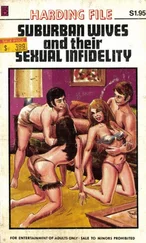Henry Meige - Tics and Their Treatment
Здесь есть возможность читать онлайн «Henry Meige - Tics and Their Treatment» — ознакомительный отрывок электронной книги совершенно бесплатно, а после прочтения отрывка купить полную версию. В некоторых случаях можно слушать аудио, скачать через торрент в формате fb2 и присутствует краткое содержание. Жанр: Здоровье, Медицина, foreign_antique, foreign_language, на английском языке. Описание произведения, (предисловие) а так же отзывы посетителей доступны на портале библиотеки ЛибКат.
- Название:Tics and Their Treatment
- Автор:
- Жанр:
- Год:неизвестен
- ISBN:нет данных
- Рейтинг книги:4 / 5. Голосов: 1
-
Избранное:Добавить в избранное
- Отзывы:
-
Ваша оценка:
- 80
- 1
- 2
- 3
- 4
- 5
Tics and Their Treatment: краткое содержание, описание и аннотация
Предлагаем к чтению аннотацию, описание, краткое содержание или предисловие (зависит от того, что написал сам автор книги «Tics and Their Treatment»). Если вы не нашли необходимую информацию о книге — напишите в комментариях, мы постараемся отыскать её.
Tics and Their Treatment — читать онлайн ознакомительный отрывок
Ниже представлен текст книги, разбитый по страницам. Система сохранения места последней прочитанной страницы, позволяет с удобством читать онлайн бесплатно книгу «Tics and Their Treatment», без необходимости каждый раз заново искать на чём Вы остановились. Поставьте закладку, и сможете в любой момент перейти на страницу, на которой закончили чтение.
Интервал:
Закладка:
E. Feindel
Tics and Their Treatment
PREFACE
NOTHING could be less scientific than the establishment of a hierarchy among medical problems based on the relative severity of symptoms. Prognosis apart, there can be no division of diseases into major and minor.
Hitherto no great importance has been attached to those reputedly harmless "movements of the nerves" known as tics: an involuntary grimace, a peculiar cry, an unexpected gesture, may constitute the whole morbid entity, and scarcely invite passing attention, much less demand investigation. Yet it is the outcome of ignorance to relegate any symptom to a secondary place, for we forget that difficult questions are often elucidated by apparently trivial data. A fresh proof of the truth of this remark is to be found in the accompanying volume, to which MM. Meige and Feindel have devoted several years of observation.
To begin with, they must be congratulated on having done justice to the word tic . No doubt its origin is commonplace and its form unscientific, but its penetration into medical terminology is none the less instructive. If popular expression sometimes confounds where experts distinguish, in revenge it is frequently so apt that it forces itself into the vocabulary of the scientist. In the case under consideration Greek and Latin are at fault. The meaning of the word tic is so precise that a better adaptation of a name to an idea, or of an idea to a name, is scarcely conceivable, while the fact of its occurrence in so many languages points to a certain specificity in its definition.
Yet till within recent years tic had all but disappeared from the catalogue of diseases. A closer study of reflex acts, however, has led to the grouping together of various clonic convulsions of face or limbs, including "spasms" on the one hand, and, on the other, conditions of an entirely different nature, for which the term "tics" ought to be reserved. The separation of "tics" from "spasms," properly so called, has been the object of various experiments and observations made by the authors and by myself, the practical value of which is evidenced by their disclosure of efficacious therapeutic measures.
Among the confused varieties of spasm, clonus, hyperkinesis, etc., it is impossible not to recognise the obvious individuality of certain motor affections – certain movements of defence, of expression, of mimicry, certain gestures more or less co-ordinated for some imaginary end – all readily distinguishable from spasms, fibrillary contractions, and choreiform or athetotic movements. It is only logical to attribute a somewhat more complex origin to these varying gestures, in which the influence of the will, however unperceived in the end, is always to be detected at the beginning.
While some convulsions and spasms are the product of special changes in muscle fibre, or motor nerve, or spinal cord, in medulla, pons, or basal nuclei, the synergic and co-ordinated muscular contractions of tic imply cortical intervention. The will may not play a conscious role therein, but the cortex alone is capable of initiating such acts. What part does it take in their genesis?
For an instance, a simple blinking of the eyelids may form a tic. Considered in itself, it is a movement of defence against dust or light; but in the absence of irritation it becomes meaningless. How then are we to explain the abruptness and intensity of contraction of the orbicularis palpebrarum, and of this muscle alone? If it were due to stimulation at some point on the reflex facial arc, other facial muscles ought to be involved; if referable to isolated excitation of the orbicularis filaments of the facial nerve, why is the contraction bilateral? It is evident we are dealing here not with a simple reflex of bulbar origin, but with a movement at once premeditated and purposive, and it is this purposive element, presupposing, as it does, co-ordination of contraction, that indicates the cortical nature of the phenomenon. Such co-ordinated movements, however causeless and inopportune they may appear, cannot be identified with mere pathological reflexes or spasms. They are tics.
Such, since the days of Trousseau and Charcot, has been the teaching of the Paris School of Medicine. Nevertheless, confusion remains, and in many text-books the unfortunate sacrifice of analytical accuracy to a premature desire for the schematic classification of disease has not tended to lessen it.
The authors of this volume have been resolute in their reference of the pathogeny of tic to a mental process. It is true, recognition of the psychological aspect of the affection is ready enough where the tic corresponds or is superadded to other "episodic stigmata of degeneration"; but the task is infinitely more delicate should the sole indication of an abnormal psychical state be the tic itself. Even in these cases examination always reveals insufficiency of inhibition, to which are due the inception and the persistence of many "bad habits." We can thus appreciate the rôle of habit in the evolution of tics, and recognise the analogy they offer to all functional acts. A tic is frequently nought else than the ill-timed and inapposite execution of some function. We may even conceive a sort of functional tic centre, formed by nerve elements corresponding to the functional grouping of the muscles involved in the tic. In advanced cases we may imagine some sort of hypertrophy of this functional centre, which may be reduced by suppression of function – that is to say, by certain methods of immobilisation.
This is the secret of the treatment of tics, and to ignore it would be disastrous. As a matter of fact, tic is not merely a neurosis, but a psycho-neurosis, or, to be more exact, a psychomotor encephalopathy. The degeneration whose first manifestation in a child is the development of a tic may reveal itself later by more disquieting signs. This word "degeneration" is employed either too indefinitely or too explicitly by those who are ignorant of its true meaning in medicine. To-day the physician's diagnosis is often anticipated by the parents, who are willing to own their child "nervous" because of his tic; but they are not so ready to admit he has a tic because he is nervous, as they would infer immediately that they have begotten a degenerate. The consolation of "superior degeneration" does not exclude a certain degree of humiliation.
No doubt superficial study is content to characterise children thus afflicted by the simple epithet "nervous," on the ground that their tic does not constitute a menace to life. But a tic in itself can never be a negligible quantity. The more it is repeated the more inveterate it becomes, and the greater the likelihood of its becoming generalised; at the same time the influence of the neuropathic diathesis is intensified. An analogy might be drawn between the tics and chorea. Prognosis, even in a mild case of adult chorea, should always be guarded, inasmuch as once the ordinary limits of the duration of the disease are over-stepped, we find ourselves face to face with the dreaded chronic variety.
The same attitude might be adopted in reference to the distressing neurosis described by Charcot and Gilles de la Tourette as the "disease of the tics," which is no more than the superlative expression of a neuropathic and psychopathic disposition entirely akin to that favouring the development of the most harmless tic. Its earliest exhibition is a series of apparently insignificant bizarre convulsions; but its indefinite prolongation, its gradual involvement of one limb after another, its association with grave mental symptoms, and its frequent termination in dementia, are reason enough for eyeing the first little premonitory tic with mistrust, and combating it with vigour.
From the motor aspect a tic is only a "bad habit," and the checking of bad habits, especially in the predisposed, must be our goal from the outset. And, should we succeed, there will be reason for congratulation, not on the happy issue of appropriate treatment for a particular tic, but because the result is a step towards
Читать дальшеИнтервал:
Закладка:
Похожие книги на «Tics and Their Treatment»
Представляем Вашему вниманию похожие книги на «Tics and Their Treatment» списком для выбора. Мы отобрали схожую по названию и смыслу литературу в надежде предоставить читателям больше вариантов отыскать новые, интересные, ещё непрочитанные произведения.
Обсуждение, отзывы о книге «Tics and Their Treatment» и просто собственные мнения читателей. Оставьте ваши комментарии, напишите, что Вы думаете о произведении, его смысле или главных героях. Укажите что конкретно понравилось, а что нет, и почему Вы так считаете.












